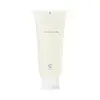What's inside
What's inside
 Key Ingredients
Key Ingredients

 Benefits
Benefits

 Concerns
Concerns

 Ingredients Side-by-side
Ingredients Side-by-side

Water
Skin ConditioningPEG-7 Glyceryl Cocoate
EmulsifyingDipropylene Glycol
HumectantGlycerin
HumectantSorbitol
HumectantButylene Glycol
HumectantPEG-10 Methyl Ether Dimethicone
EmulsifyingAmmonium Acryloyldimethyltaurate/Beheneth-25 Methacrylate Crosspolymer
Emulsion StabilisingCaprylyl Glycol
EmollientEthylhexylglycerin
Skin ConditioningChlorphenesin
AntimicrobialSodium Carbomer
Emulsion Stabilising1,2-Hexanediol
Skin ConditioningCitric Acid
BufferingDisodium EDTA
Sambucus Nigra Flower Extract
RefreshingSodium Hyaluronate
HumectantHyaluronic Acid
HumectantHydrolyzed Hyaluronic Acid
HumectantHydrolyzed Sodium Hyaluronate
Skin ConditioningHydroxypropyltrimonium Hyaluronate
Potassium Hyaluronate
Skin ConditioningSodium Hyaluronate Crosspolymer
HumectantPentylene Glycol
Skin ConditioningSodium Acetylated Hyaluronate
HumectantGlycyrrhiza Uralensis Root Extract
Skin ConditioningWater, PEG-7 Glyceryl Cocoate, Dipropylene Glycol, Glycerin, Sorbitol, Butylene Glycol, PEG-10 Methyl Ether Dimethicone, Ammonium Acryloyldimethyltaurate/Beheneth-25 Methacrylate Crosspolymer, Caprylyl Glycol, Ethylhexylglycerin, Chlorphenesin, Sodium Carbomer, 1,2-Hexanediol, Citric Acid, Disodium EDTA, Sambucus Nigra Flower Extract, Sodium Hyaluronate, Hyaluronic Acid, Hydrolyzed Hyaluronic Acid, Hydrolyzed Sodium Hyaluronate, Hydroxypropyltrimonium Hyaluronate, Potassium Hyaluronate, Sodium Hyaluronate Crosspolymer, Pentylene Glycol, Sodium Acetylated Hyaluronate, Glycyrrhiza Uralensis Root Extract
Water
Skin ConditioningPEG-7 Glyceryl Cocoate
EmulsifyingPEG-20 Sorbitan Cocoate
EmulsifyingButylene Glycol
HumectantDipropylene Glycol
HumectantHouttuynia Cordata Extract
Skin ConditioningAlpha-Arbutin
AntioxidantTrisodium Ascorbyl Palmitate Phosphate
AntioxidantHibiscus Rosa-Sinensis Leaf Extract
BleachingCrataegus Cuneata Fruit Extract
Skin ConditioningZiziphus Jujuba Fruit Extract
Skin ConditioningHydrolyzed Grape Fruit Extract
HumectantPyrus Malus Fruit Extract
Skin ConditioningCitrus Aurantium Dulcis Fruit Extract
MaskingCitrus Limon Juice
Skin ConditioningCitrus Junos Fruit Extract
Skin ConditioningRosa Damascena Flower Water
MaskingCarbomer
Emulsion Stabilising1,2-Hexanediol
Skin ConditioningCaprylyl Glycol
EmollientPotassium Hydroxide
BufferingWater, PEG-7 Glyceryl Cocoate, PEG-20 Sorbitan Cocoate, Butylene Glycol, Dipropylene Glycol, Houttuynia Cordata Extract, Alpha-Arbutin, Trisodium Ascorbyl Palmitate Phosphate, Hibiscus Rosa-Sinensis Leaf Extract, Crataegus Cuneata Fruit Extract, Ziziphus Jujuba Fruit Extract, Hydrolyzed Grape Fruit Extract, Pyrus Malus Fruit Extract, Citrus Aurantium Dulcis Fruit Extract, Citrus Limon Juice, Citrus Junos Fruit Extract, Rosa Damascena Flower Water, Carbomer, 1,2-Hexanediol, Caprylyl Glycol, Potassium Hydroxide
Ingredients Explained
These ingredients are found in both products.
Ingredients higher up in an ingredient list are typically present in a larger amount.
1,2-Hexanediol is a synthetic liquid and another multi-functional powerhouse.
It is a:
- Humectant, drawing moisture into the skin
- Emollient, helping to soften skin
- Solvent, dispersing and stabilizing formulas
- Preservative booster, enhancing the antimicrobial activity of other preservatives
Butylene Glycol (or BG) is used within cosmetic products for a few different reasons:
Overall, Butylene Glycol is a safe and well-rounded ingredient that works well with other ingredients.
Though this ingredient works well with most skin types, some people with sensitive skin may experience a reaction such as allergic rashes, closed comedones, or itchiness.
Learn more about Butylene GlycolCaprylyl Glycol is a humectant and emollient, meaning it attracts and preserves moisture.
It is a common ingredient in many products, especially those designed to hydrate skin. The primary benefits are retaining moisture, skin softening, and promoting a healthy skin barrier.
Though Caprylyl Glycol is an alcohol derived from fatty acids, it is not the kind that can dry out skin.
This ingredient is also used as a preservative to extend the life of products. It has slight antimicrobial properties.
Learn more about Caprylyl GlycolDipropylene Glycol is a synthetically created humectant, stabilizer, and solvent.
This ingredient helps:
Dipropylene glycol is technically an alcohol, but it belongs to the glycol family (often considered part of the ‘good’ alcohols). This means it is hydrating and gentle on skin unlike drying solvent alcohols like denatured alcohol.
As a masking agent, Dipropylene Glycol can be used to cover the smell of other ingredients. However, it does not have a scent.
Studies show Dipropylene Glycol is considered safe to use in skincare.
Learn more about Dipropylene GlycolPeg-7 Glyceryl Cocoate is created from polyethylene glycol and fatty acids from coconut oil.
It is a synthetic polymer with emulsifying and cleansing properties.
As an emulsifier, Peg-7 Glyceryl Cocoate prevents ingredients such as oils and water from separating. It also helps rinse away oils, dirt, and pollutants from skin.
Peg-7 Glyceryl Cocoate may not be fungal acne safe. It can also dry out skin.
Learn more about PEG-7 Glyceryl CocoateWater. It's the most common cosmetic ingredient of all. You'll usually see it at the top of ingredient lists, meaning that it makes up the largest part of the product.
So why is it so popular? Water most often acts as a solvent - this means that it helps dissolve other ingredients into the formulation.
You'll also recognize water as that liquid we all need to stay alive. If you see this, drink a glass of water. Stay hydrated!
Learn more about Water